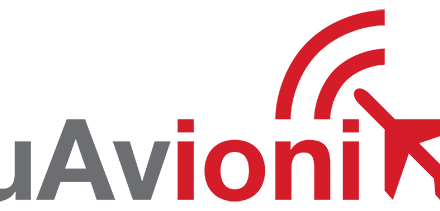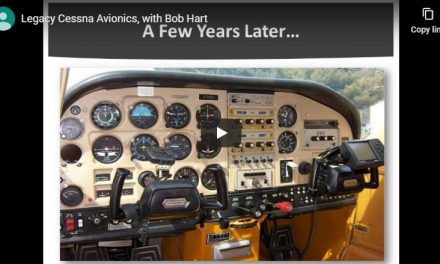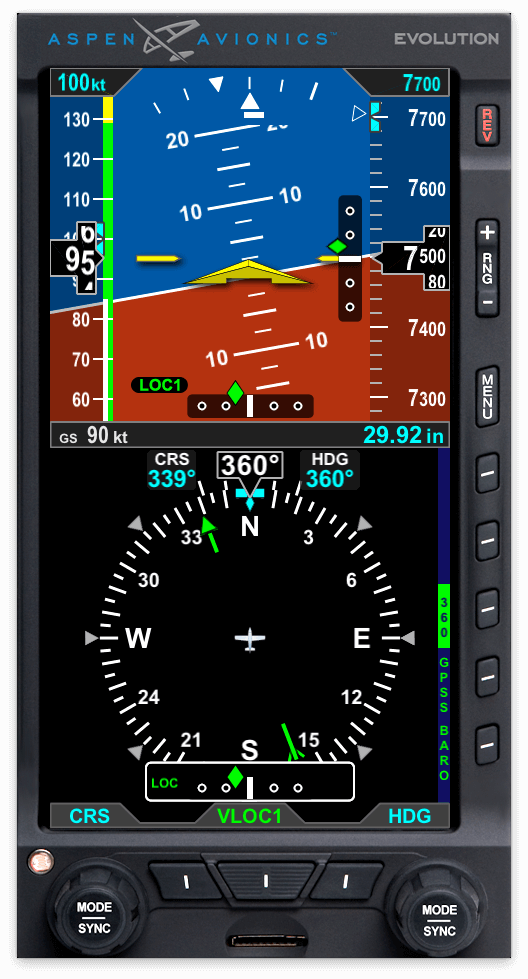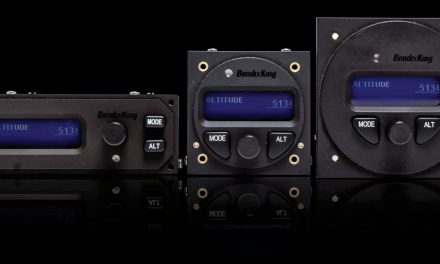 The Manufacturers
The Manufacturers
By Bob Hart – www.AvionixHelp.com
This article was written in 2015
Although the ADS-B mandate is five years away, meeting the mandate looms heavy in the minds of aircraft owners. As we defined in Part One, different owners must approach ADS-B with consideration as to the aircraft they fly, how they fly them, and how their aircraft is equipped today to determine what they will need to make the FAA happy on January 1, 2020. Manufacturers of the equipment are also stirring the pot, suggesting that your ability to meet the mandate due to “equipment shortages” and “limited installation resources” is coming to an end soon. No question, this mandate is larger than most and covers the entire GA fleet. Unless you’re in the “Cub Crowd” or fly similar aircraft with no intention of wandering into the ATC system, you can’t wait until 2019 to address this. In Part One, we discussed the mandate and the ways to meet it with either a Mode S transponder or with a UAT. In this article, we’ll discuss the manufacturers (in alphabetical order) and the equipment available as of the start of 2015.
Appareo Systems (www.appareo.com)
You may not recognize the name. Frankly, I didn’t either, until I dug a little deeper. Appareo Systems is the manufacturer of the venerable Stratus and Stratus 2 ADS-B “In” receivers used with the popular ForeFlight navigation software used on the Apple IPAD and iPhone.
Since receiving ADS-B “In” in an uncertified manner is not only going to be popular—as is ForeFlight as a navigation tool—the Stratus option is a good one…but there’s more coming.
Appareo has announced that they will soon offer an ADS-B “Out” compatible transponder with internal certified WAAS GPS in a single package. This is a great idea and could be a good option for aircraft owners who currently don’t have (or don’t plan to add) a WAAS GPS to their panel. Neither the model number nor the pricing have been released as of this writing, but keep an eye on Appareo if this sounds like the right solution for you.
Aspen Avionics (www.aspenavionics.com)
Aspen offers a wide range of UAT options from a basic certified ADS-B “In” receiver to a dual-band UAT transceiver that provides both ADS-B “In” and “Out” and built-in WAAS-certified GPS. These are designed to work in conjunction with the Aspen Evolution MFDs.
While these units are designed to work with a standard Mode A/C transponder, be aware that many of the older transponders are simply not compatible with ADS-B. As of this writing, the dual-band units have not come to market, but they are expected to be available by or around February/March 2015. As of now, Aspen is showing no interest in offering a 1090 Mode S ES Transponder. If you already have an Aspen two-screen EFIS package in your aircraft or plan to add them to your panel, you’ll want to look closer at the Aspen ADS-B options and their connected panel approach.
Avidyne Corporation (www.avidyne.com)
Now that Avidyne offers a complete avionics suite, I would expect their line of ADS-B options to continue to expand. With the introduction of their IFD540 and 440 Integrated Navigators came the AXP340 Mode S ES 1090 Transponder that is a fully compliant ADS-B “Out” option. It’s worth noting that the AXP340 is tray and pin compatible with the King KT-76A transponder and as a direct slide-in. This will save you money on installation.
You don’t need an IFD540 or 440 to utilize the Avidyne 1090 ADS-B solution. On the other hand, if you have or plan to add an IFD to your panel, Avidyne has introduced the MLB100 ADS-B “In” receiver that will send ADS-B Weather and Traffic to the IFDs. The price for the MLB100 will be under $2500 and it should be available by the time of this printing. Note that IFDs currently in service will require a field-loadable software update to work with the MLB100.
The Avidyne TAS Series of “active” traffic units has been a popular item. If you’ve followed my articles you know that I’m a big fan of active traffic and of the TAS units. Avidyne now offers the TAS-A Series that provides active traffic and receives TIS-B traffic information from ADS-B “out” equipped aircraft. Certainly, having both sources of traffic information is desirable, but it’ll be even more so as ADS-B equipage grows over the next five years. Plus, as I’ve often said, you’ll never “outgrow” an active traffic system!
Whether Avidyne will offer a UAT 978 transceiver is yet to be determined. Perhaps, with their AXP340 1090 solution they will be content. However, as I mentioned in my last article, I believe that the UAT market will likely represent the largest share of the ADS-B market and Avidyne may well want to get their piece of the action.
Bendix King (www.bendixking.com)
Ever since Honeywell took command of the Bendix King brand, they have lagged behind the pack in virtually every significant new GA avionics category. Sadly, ADS-B is no exception. I have the deepest respect for Bendix King products and their quality, but Honeywell took them off the path and only now are they finding their way back.
At this point, Bendix King sells only a 1090 solution in their KT-74 Mode S ES transponder. The transponder itself is competitively priced, but if you lack a WAAS GPS for position, you’ll need to add the FreeFlight GPS engine to your package. This is not a competitive solution in my opinion. In July 2014, Bendix King announced the KGX Series of 978 MHz UATs. The KGX-150 UAT Transceiver with built-in WAAS GPS engine will provide ADS-B “In” and “Out” to a certified display or to a tablet via an optional wireless interface. The KGX-130 will do the same less the WAAS GPS. As of this writing, no delivery date or final pricing has been announced.
FreeFlight Systems (www.freeflightsystems.com)
FreeFlight and Garmin are among the first to offer ADS-B solutions; however, at this point FreeFlight offers the widest selection and has even become an ADS-B manufacturing source for other avionics companies. This is certainly a testament to their quality. First of all, FreeFlight has been offering a certified, remote WAAS GPS for a long time; thus, they’ve had a head start on that technology. Today, they offer the widest selection of UATs in their RANGR line, from a simple remote and certified ADS-B receiver to a fully capable remote, dual-band UAT transceiver with ADS-B “In” and “Out” capability with built-in WAAS GPS.
Pilots needing ADS-B “Out” on 1090 MHz have the option of the FDL-1090TX which is a Mode S ES “remote” transponder that’s perfect for pilots with full radio stacks. The FDL-1090TX uses a remote-mounted transponder and a control head that fits a standard 2 ¼” hole and therefore makes extra room for today’s large format MFDs and Navigators.
Additionally, FreeFlight provides an ADS-B solution for airports that are also required to provide ADS-B “Out” capability on ground vehicles. Plus, they offer ADS-B test equipment for the avionics shop environment. This is certainly the broadest offering of ADS-B products available from any manufacturer and, when combined with their years of experience with GPS, Radar Altimeters, and GPS sensors, makes FreeFlight worth consideration.
Garmin (www.garmin.com)
No question, Garmin has been leading the pack in GA avionics since they bought UPS Aviation Technologies in the early 2000s. The GDL-90, first developed by UPS AT for the Alaska Capstone Project, was the first certified ADS-B UAT marketed by Garmin. Since then, Garmin’s been at the forefront of developing and marketing of ADS-B.
Garmin was first in the US to offer a 1090 based solution with their GTX-330 ES ADS-B “Out” compatible transponder and has since upgraded the GDL-90 UAT with the introduction of the GDL-88 (and later cancelled the GDL-90).
I suspect that the GDL-88 represents the majority of UATs in service today. The GDL-88 is available with or without an internal, certified WAAS GPS engine; and for pilots wanting maximum assurance of ADS-B coverage it’s available with dual (diversity, top and bottom) antennas. The GDL-88 is certified to deliver ADS-B info to an MFD or large format navigator like the GTN-750. Add Garmin’s Flightstream Bluetooth option and Garmin Pilot software, and the GDL-88 can also feed your IPAD or Android tablet.
If you read my December 2014 article on “connectivity,” you’d know there’s a movement to add “smart” technology, like the Apple IPAD, to the cockpit as an alternative to an MFD and as a secondary navigation tool. Garmin has been paying attention and did something I think is smart. They introduced the GDL-84 package for those without a certified MFD or WAAS GPS. Through their Flightstream Bluetooth wireless gateway (included), the GDL-84 sends ADS-B Traffic and WX to either an Apple IPAD or Android tablet. What’s also significant about this package (other than the lower price) is that a certified WAAS GPS is also integrated making this a very attractive option for the aircraft owner who does not own or plan to add a WAAS navigator and who would like ADS-B “In” and “Out” in a single package—all for about $3500 plus installation!
For the pilot who would rather have non-certified ADS-B “In,” Garmin offers their GDL-39 portable solution which can communicate directly to a Garmin portable GPS or to an IPAD or Android tablet via Bluetooth in conjunction with Garmin Pilot software. In short, Garmin has ADS-B covered with a solid ADS-B solution for just about anyone.
Acron Aviation (acronaviation.com)
Through 2014, Acron Aviation has been “teasing” the GA pilot with hints of their new Lynx ADS-B product, but specifics have yet to be announced.
We do know that the model NGT-9000 is their panel-mounted unit, suggesting that Acron Aviation will also offer remote options and that all Lynx products will have a WAAS GPS integrated position source. Acron Aviation’s goal was to come to market by the end of 2014, but that goal has not been achieved. Calls to L-3 were not returned in time for this article, so we can only add Acron Aviation to the list of companies to watch in 2015 and see if their promise of a “Low Cost ADS-B Path” comes true.
NavWorX (www.navworx.com)
NavWorX is best known for their WX products targeted to the experimental market. In 2010, they introduced a non-certified ADS-B transceiver. In 2014, their ADS600B received TSO status and is now fully compliant as a solution to the 2020 ADS-B requirement for “Out” and provides ADS-B “In” traffic and WX. The ADS600BG is the same with a certified WAAS internal GPS engine for aircraft without a legal GPS source. The ADS600 Series is compatible with most transponders, and many MFDs and Navigators. With the addition of their very affordable WiFi option, they can display ADS-B traffic and weather on an IPAD or IPhone as well. The NavWorX products have been proven and the ADS600 units are one of the most affordable UAT options—whether you need a WAAS GPS or not.
Trig Avionics (www.trig-avionics.com)
When we think about Scotland, we most often think golf. Trig Avionics of Edinburgh is trying to change that. It may surprise you to learn that Trig had an ADS-B capable transponder as early as 2008, though FAA approval for use in the US came in 2012.
The Trig TT31 is a fully capable Mode S 1090 ES transponder that is (wisely) a direct fit for existing KT-76A and 78A installations. If you already have a Garmin WAAS GPS and a KT-76A transponder, you’ll find that the TT31 is a very economical way to achieve ADS-B “Out” certification in your aircraft.
For tight panels, Trig offers the TT22, which is a remote mount, two-part Class 1, Mode S ES transponder. The control head fits a standard 2 ¼” hole and the TT31 has a built-in altitude encoder. FYI, Class 1 means it’s approved for high performance aircraft that fly above 15K (it’s an output power thing). For tight panels that fly below 15K, the TT21 offers the same in a lower power output version and saves a few bucks. Trig also offers a compatible TN70 WAAS GPS receiver that works with all their models if you need a position source.
Trig does not offer a UAT at this time and, frankly, they promote themselves as a “transponder company,” so I don’t expect them to.
Since the ADS-B requirement reaches virtually all GA aircraft that currently have transponders, it’s no surprise that there are so many options available—with many more to come. This article has been an attempt to introduce you to options that are available today. While there are manufacturers of non-certified options that I haven’t mentioned here, it’s safe to assume that readers of this magazine are more interested in meeting the “certified” requirement. The focus is on ADS-B “Out” which is a “certified” thing. I suspect that many GA pilots flying certified aircraft will go for non-certified ADS-B “In” and display it on a smart device like an IPAD or Android tablet. There will be lots of these options available.
With few exceptions, most avionics manufacturers offering certified ADS-B products have shown their hand. Whether or not that “super affordable” ADS-B solution will ever come is yet to be seen. As I mentioned in part one, those pilots flying basic, legacy aircraft who either “dabble” in the IFR system or avoid it altogether are waiting and hoping for this. Conversely, the serious IFR pilot flying performance aircraft will take the ADS-B mandate in stride. Regardless of where you and your airplane fit into the ADS-B requirement puzzle, I hope this article has been of help!
Until Next time, Happy and Safe Flying!





